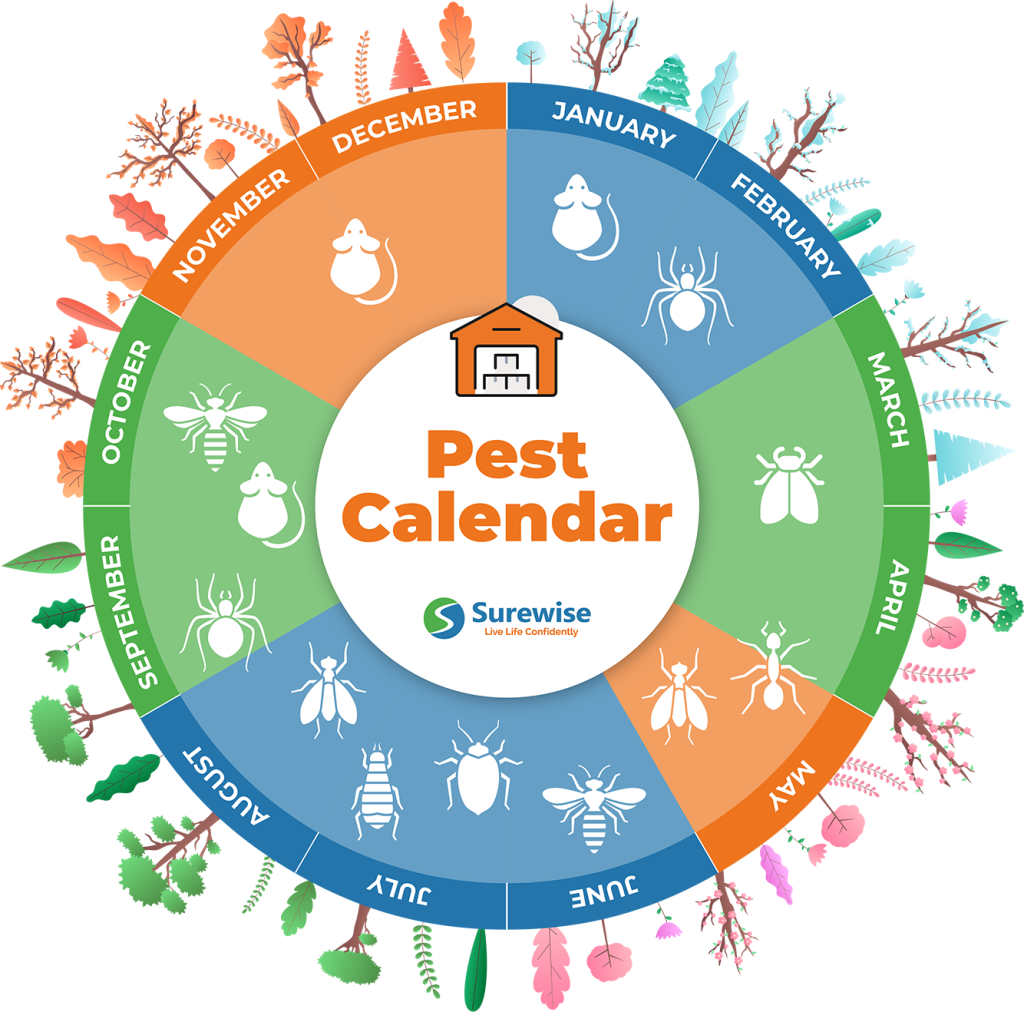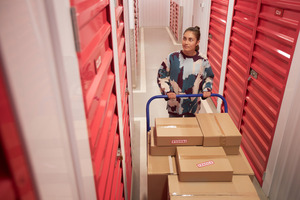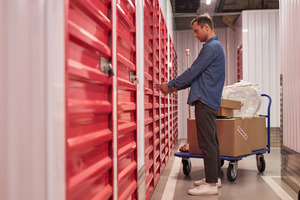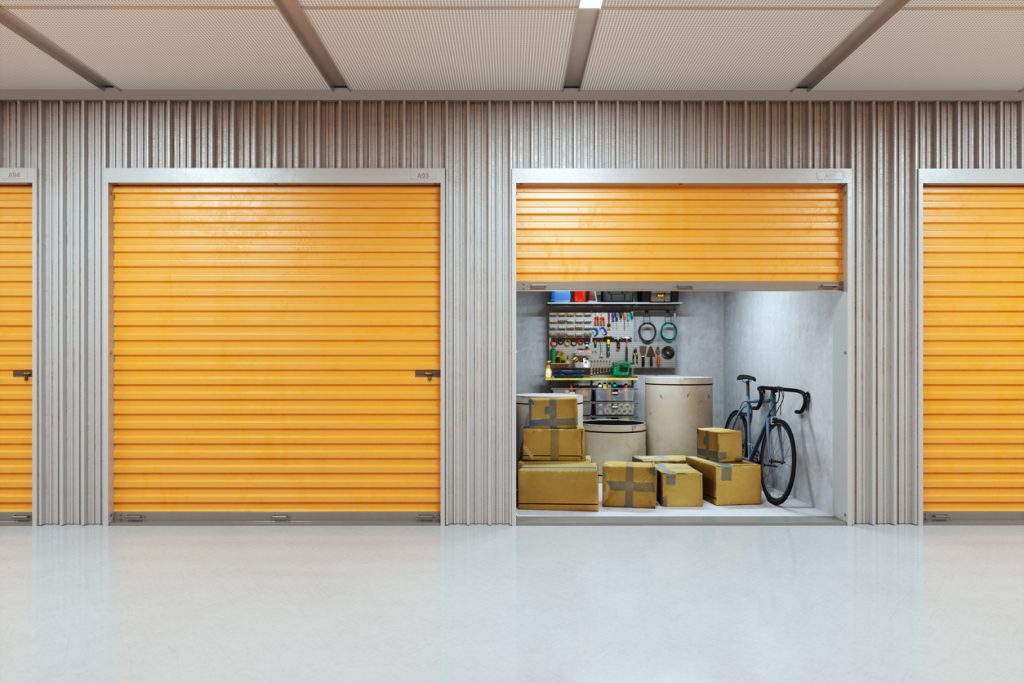One of the worst discoveries to make in your self-storage unit is the presence of pests, whether that’s a mouse dropping on your fabric sofa or chew marks on your cardboard boxes! In this guide, we’ll cover simple tips to keep your unit pest all free year round and explain when different pests are most likely to appear.

The Pest Calendar: What Appears When
Pest activity varies significantly throughout the year, and understanding these seasonal patterns can help you take preventative measures at the right time.
January to February: Winter is when rats and mice are most likely to seek warmth inside storage units, especially in unheated buildings. With reports of rats on the rise and overrunning UK cities, these months require particular vigilance. You may also notice occasional spiders taking shelter from the cold.
March to April: Early insect activity begins as temperatures rise. Pantry moths can become an issue if any food items are stored, while clothes moths start targeting textiles. If your unit is near outdoor entrances, you may spot occasional ants emerging.
May: Increased insect activity ramps up during this month. Flies and occasional ants may appear, whilst moths become more active, especially in textile storage areas where they can cause significant damage to natural fibres.
June to August: Peak insect season arrives. Wasps can occasionally enter units if they’re accessed frequently, along with flies and fleas in some areas. Spiders are often present in corners and darker areas of storage units during these warmer months.
September to October: Spiders actively seek shelter indoors during autumn. Wasps may still appear in early September, whilst rodents begin exploring units for potential winter shelter. This is a critical time to check your unit is properly sealed, as rodents can squeeze through gaps as small as 1.5cm.
November to December: Rodent infestations become most likely as temperatures drop and rats and mice actively search for warm nesting sites. Most insects, including wasps, ants, and beetles, are largely inactive during these colder months, though spiders may continue to shelter indoors.
Download your copy of the Pest Calendar here.
10 Top Tips For Keeping Your Unit Pest-Free
Now that you know when they’re coming, here’s how to keep them out.
1. Choose a Clean Facility
When selecting a self-storage unit, opt for a facility known for its cleanliness and pest control measures.
Take a good look for their reviews and don’t be afraid to ask the management about their pest prevention practices to ensure your belongings are stored in a well-maintained environment.
2. Inspect the Unit Before Renting
Before you move your items in, thoroughly inspect the storage unit for any signs of pests, such as droppings, nests, or damage.
Check for gaps or holes in the walls, ceiling, and floor that could allow pests to enter, and ensure these are sealed. This is particularly important before the autumn months when rodents begin seeking shelter.
3. Wrap Upholstered Furniture
If you’re storing upholstered furniture, wrap it in plastic or use specially designed furniture covers to keep those items secure.
This helps to protect the fabric from pests like moths and rodents, which can cause significant damage if they do find their way into your unit!
4. Avoid Storing Food
Never store food or perishable items in your self-storage unit. Even non-perishable food items can attract pests, so it’s best to keep all food-related items out of storage. This includes pet food and bird seed. Important note: The majority of storage providers will not provide cover if food is stored.
Read more about the items you should never put in storage to make sure you’re not putting your unit at risk!

5. Use Pest Deterrents
If you’re worried about attracting pests, you could consider using natural pest deterrents such as mothballs, cedar blocks, or essential oils like lavender and peppermint.
These can help repel pests without introducing harmful chemicals into your storage unit – although their effectiveness may be debateable. Cedar is particularly effective against moths during the spring and summer months.
6. Elevate Your Items
Keep your items off the floor by using pallets or shelving units. This not only protects your belongings from moisture but also makes it harder for pests to access them.
This also has the added benefit of allowing for better air circulation around your items, reducing the likelihood of mould and mildew being introduced into your items.
7. Use Airtight Containers
Store your belongings in airtight, plastic containers rather than cardboard boxes. Plastic containers are more resistant to pests and provide a better seal, protecting your items from potential infestations. However, they aren’t completly pest proof and making regular checks and not storing personal valuables is advised.
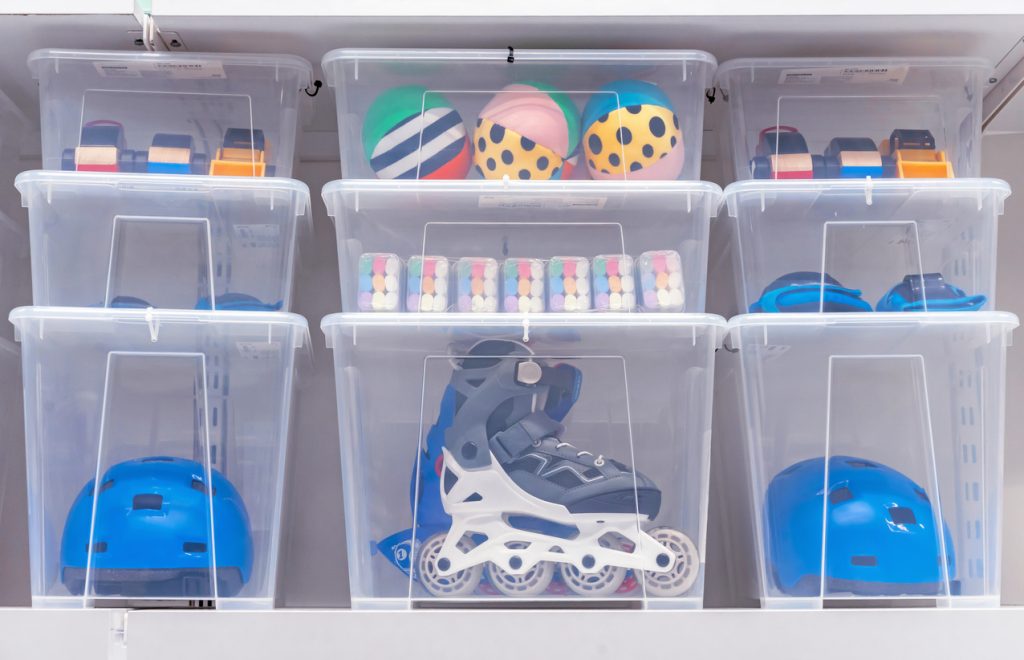
8. Keep the Unit Clean
Maintain the cleanliness of your storage unit by sweeping it out and removing any dust, rubbish, or debris. A clean unit is less attractive to pests and reduces the chances of an infestation.
If you have a storage unit that’s particularly over-filled, this is especially important as it’s all too easy for the initial signs of pests to go unnoticed until it’s too late!
9. Schedule Seasonal Inspections
Visit your storage unit regularly to look for pest signs and verify everything is in good shape. While year-round vigilance is important, be especially thorough during autumn (prime rodent season) and spring (peak insect activity). If an infestation is found, inform the facility management and your insurance provider immediately.
10. Use Professional Pest Control Services
If you notice any signs of pests, inform the storage facility management immediately. They should have a professional pest control service that can address the issue.
Don’t attempt to handle a significant pest problem on your own, as effective and efficient treatment requires specialised knowledge. What’s more, your storage facility will likely want to check that other units have not been effected.
Important: Check Your Storage Insurance
Not all storage insurance policies will cover you if your unit is infested with vermin, and some will have specific provisions – such as only covering you if the vermin is from a source outside the storage facility premises.
Please ensure you check your own policy documents to stay informed on what you are and are covered for.

